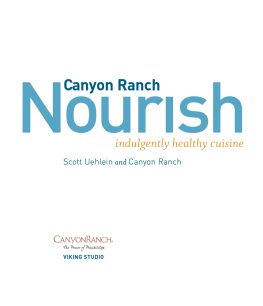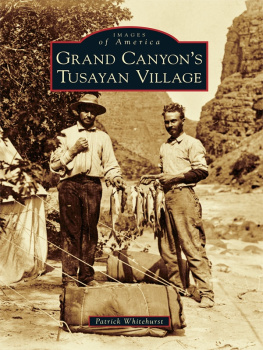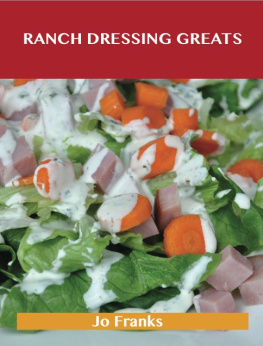


VIKING STUDIO Published by the Penguin Group Penguin Group (USA) Inc., 375 Hudson Street, New York, New York 10014, U.S.A. Penguin Group (Canada), 90 Eglinton Avenue East, Suite 700, Toronto, Ontario, Canada M4P 2Y3 (a division of Pearson Penguin Canada Inc.) Penguin Books Ltd, 80 Strand, London WC2R 0RL, England Penguin Ireland, 25 St. Stephens Green, Dublin 2, Ireland (a division of Penguin Books Ltd) Penguin Books Australia Ltd, 250 Camberwell Road, Camberwell, Victoria 3124, Australia (a division of Pearson Australia Group Pty Ltd) Penguin Books India Pvt Ltd, 11 Community Centre, Panchsheel Park, New Delhi 110 017, India Penguin Group (NZ), 67 Apollo Drive, Rosedale, North Shore 0632, New Zealand (a division of Pearson New Zealand Ltd) Penguin Books (South Africa) (Pty) Ltd, 24 Sturdee Avenue, Rosebank, Johannesburg 2196, South Africa Penguin Books Ltd, Registered Offices: 80 Strand, London WC2R 0RL, England First published in 2009 by Viking Studio, a member of Penguin Group (USA) Inc. Copyright CR Products, 2009 All rights reserved
Photographs by Julie Toy LIBRARY OF CONGRESS CATALOGING IN PUBLICATION DATA Uehlein, Scott.
Canyon Ranch: nourish : indulgently healthy cuisine / Scott Uehlein and Canyon Ranch.
p. cm.
Includes index.
ISBN 978-1-101-66508-4
1. Cookery (Natural foods) 2.
Canyon Ranch. I. Canyon Ranch. II. Title.
TX741.U34 2009
641.5636c222008035491 Designed by Vertigo Design New York Without limiting the rights under copyright reserved above, no part of this publication may be reproduced, stored in or introduced into a retrieval system, or transmitted, in any form or by any means (electronic, mechanical, photocopying, recording or otherwise), without the prior written permission of both the copyright owner and the above publisher of this book. The scanning, uploading, and distribution of this book via the Internet or via any other means without the permission of the publisher is illegal and punishable by law.
Please purchase only authorized electronic editions and do not participate in or encourage electronic piracy of copyrightable materials. Your support of the authors rights is appreciated. Version_2 To Enid and Mel Zuckerman, whose vision and dedication have inspired thousands to live healthier lives.
ITS ABOUT TASTE
From its beginning thirty years ago, Canyon Ranch has been a leader in the development of spa cuisine. Weve fought that label all alongthe Ranch is immeasurably more than what most people think of as a spa, and, frankly, we think of our food as simply great, healthy cuisine. Back in the 1980s, though, we probably deserved every bad thing associated with those two words. Fortunately, weve come a long way since the days of tofu and sprouts and reinvented classics like low-fat beef Wellington.
Spa is now a grown-up cuisine of its own. I only half laugh when people tell me how surprised they are at just how flavorful our food is. Its all about flavor. When we begin to build a menu item, we build it from the ground up, so our dining guests do not have any preconceived notions as to what the dish will taste like. No longer do we reinvent lower-fat versions of dishes that have already been done, as we can only disappoint you with the outcome. (There are exceptions to every rule....
More recently, I began playing with some classics, so I have amended my never stance to OK, but only if its better than the original. The recipes here for Pot Roast, Macaroni and Cheese, and Classic Egg Salad Sandwich are three exceptions that really prove the rule.) But for the most part, I try not to reinvent. As the dish takes shape, we look for key elements. Those elements are sweet, sour, bitter, and salty. Of course, now we also pay homage to the fifth sense of umami, but more on that later. Sweet, sour, bitter, and salty can come from many sources.
Sweetness in a savory dish might be captured as a taste element through caramelization, the addition of a fruit, or even a natural sweetener such as honey, maple syrup, or sugar. Sweet is easy to overdo, so we use it in savory dishes as a counterpoint to sour. Sour is incorporated through the introduction of an acid, generally citrus or vinegar. Bitter is kind of dicey because many people do not care for this taste, but bitter elements are actually easier to incorporate than you might think. Bitter may be very subtle, such as the slight bitter taste you get from marking a piece of fish on the grill, or more bold, in the form of a bitter green vegetable. Either way, without bitter, the balance of the dish will be off.
Salty simply means a properly seasoned dish, not salty like potato chips are salty. All of these elements need to be present for the dish to be properly balanced. Throw too much of one element into the mix and you will have a dish that is out of balance and fails to satisfy. Forget to incorporate everything, and you end up with a dish that is missing something. All the elements have to be there. Because we are creating dishes that are lower in fat, we must make sure we are satiating the palatebut dont worry, we will satiate your palate.
In fact, the taste of the food will be more vibrant than ever: Without so much butter and cream, which just mute your sense of taste, flavors really come alive. The most recent addition to the flavor fold is umami. Umami is the sensation of savoriness, which is almost a mouth-feel as much as a taste, but it is widely recognized as our fifth sense of taste. Umami is perceived by certain receptors on the tongue and is found naturally in higher concentrations in foods such as soy sauce, mushrooms, and meats. While we do not go out of our way to include items higher in umami in our cuisine, you wont be surprised to see umami-rich foods appearing in many of our recipes. I have to insert a word about subtleties.
You will notice that many of our recipes include key ingredients such as freshly ground black pepper or grated fresh ginger or even strange instructions such as toast the spices. We do this purposefully as each of these elements adds subtle flavors that would otherwise not be present. For example, if you use pepper out of a shaker, it tastes completely different from the freshly ground stuffyou can even tell the difference by smelling it. Try it sometime. The toasting of spices introduces a subtle nutty flavor, and by crushing or bruising spices in a mortar and pestle, you bring out their natural oils and therefore increase their flavor. Texture is another element we consider in composing a dish.
Everything on the plate cant be crunchy, nor should everything be soft: Again, balance is key. Crunch may come from a raw vegetable such as cucumber, but it also may come from a cooked vegetable, such as bok choy. It can come from very obvious sources such as shoestring potatoes or more subtle sources such as the slight crunch of the perfectly crisp exterior of our sauted Grits Cake. Soft might be a sweet strawberry in among the crunchy arugula of our Strawberry, Chicken, and Arugula Salad. For sure, both elements are present. The last consideration is eye appeal.
We eat with our eyes first! This means each recipe we prepare must be visually appealing. I hope this gives a bit of an overview of flavor, texture, and eye appeal, three key elements in cooking in a lighter, healthier, and more natural manner, the way we do at Canyon Ranch. I wish you happy and healthy cooking! Chef Scott Uehlein













